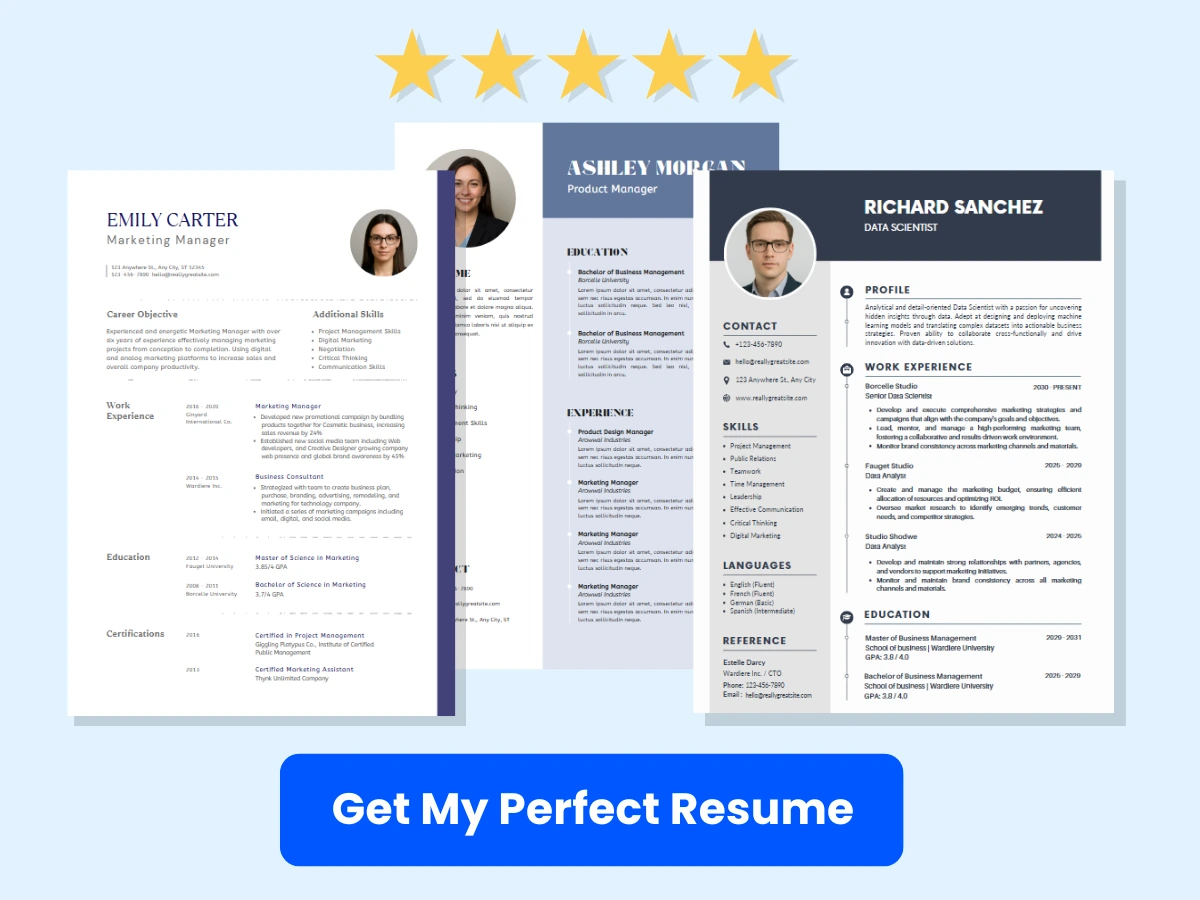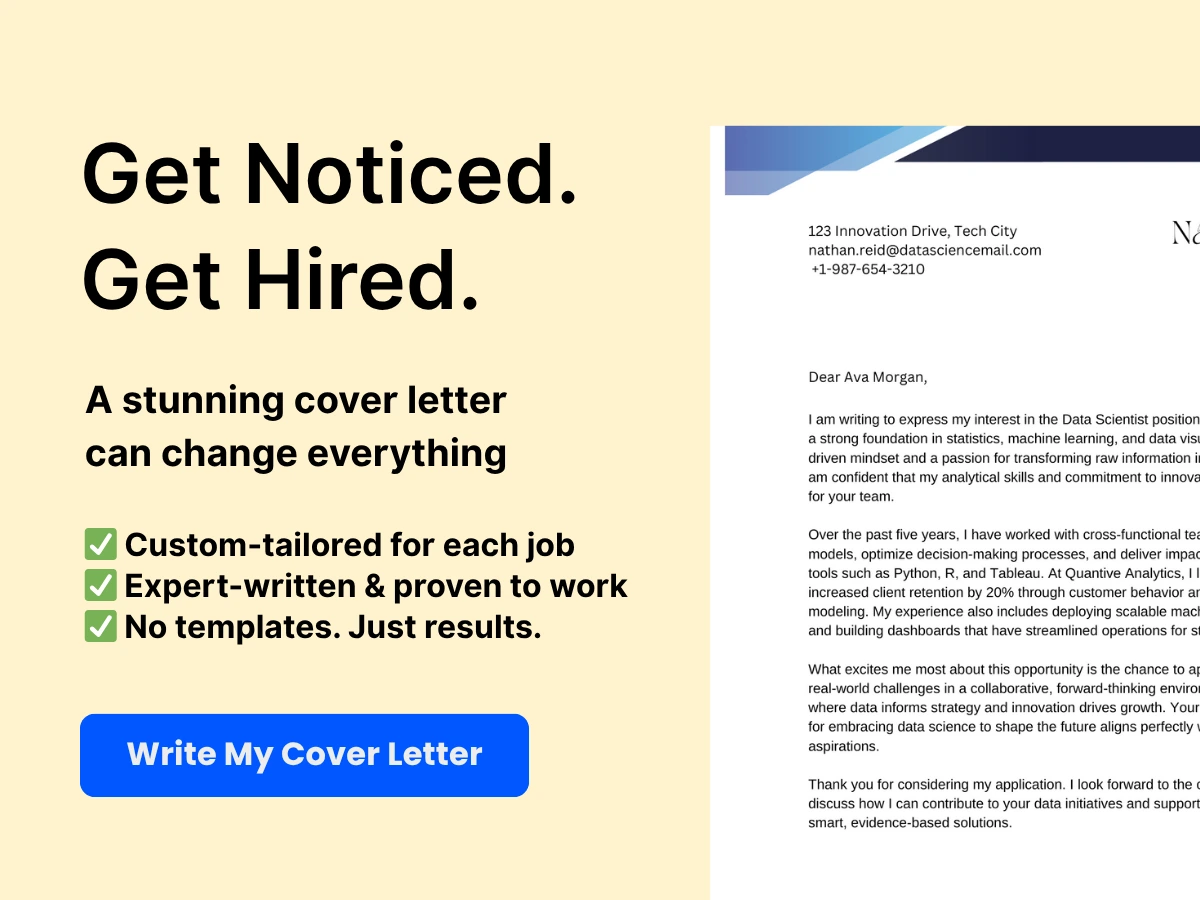During a job interview, the employer is not only evaluating your skills and experience, but also how well you would fit with their company’s culture and work environment. One important aspect to discuss is your work style. Your work style encompasses the habits, behaviors, and approaches you take to complete tasks, collaborate with colleagues, and manage your workload.
In this article, we will discuss the importance of discussing work style in an interview, the benefits of understanding your work style, and what employers look for when evaluating work style. By understanding and articulating your work style effectively, you can provide the employer with a better understanding of how you work, which can increase your chances of securing the position.
Benefits of understanding one’s work style
Understanding your work style can help you communicate your strengths and preferences to the employer, making it easier for them to determine if you are the right fit for their team. It also allows you to identify areas where you may need to improve, helping you grow in your career. Additionally, understanding your work style can lead to increased job satisfaction, as you can find a role and work environment that aligns with your preferences.
What employers look for when evaluating work style
Employers are interested in assessing your work style to determine how well you would fit with their company culture and work environment. They want to see if your work style aligns with the expectations and demands of the role they are looking to fill.
When evaluating work style, employers may consider a variety of factors, including how you handle stress, your communication style, your problem-solving approach, your ability to collaborate with others, your time management skills, and your approach to taking ownership and responsibility for your work.


Discussing your work style in an interview is an essential part of demonstrating your fit for the role you are applying for. By understanding and articulating your work style effectively, you can provide the employer with valuable insights into how you work, making it easier for them to determine if you are the right fit for their company.
Understanding Work Style
One important aspect that an interviewer explores during an interview is the candidate’s work style. As defined by Career One Stop, work style refers to the way an individual approaches and completes tasks. Understanding work style helps employers gauge the fit of a candidate’s work style with the company’s work culture and job requirements.
There are different types of work styles, each with unique ways of working and achieving results. Some examples of work styles are analytical, creative, detail-oriented, social, organized, and independent. Analytical individuals prefer data-driven decision-making and rely on logic and critical thinking to solve problems. Creative types thrive in an environment that encourages originality, innovation, and experimentation. Detail-oriented individuals pay close attention to details, are meticulous, and strive for perfection. Social types prioritize communication and collaboration and work well in teams. Organized individuals value structure, planning, and punctuality, while independent types work best with minimal supervision and can manage their time efficiently.
It is essential for employers to consider how an individual’s work style will impact their job performance. For example, if the company values attention to detail, hiring a creative individual who prefers to brainstorm ideas and think outside the box may not be the best fit. Similarly, having a team-oriented individual who thrives in collaborative environments work in a solitary role may not lead to optimal productivity.
Research suggests that when employees are matched with job positions that align with their work style, there can be significant improvements in job satisfaction and performance. For instance, a study conducted by the Journal of Occupational Health Psychology found that employees who worked in jobs that matched their preferred work style were more engaged, performed better, and were more satisfied with their job.
Understanding work style is crucial for companies to create optimal working environments and to find the right individuals for job roles. It is important for candidates to be honest about their work preferences during an interview and for employers to consider the fit of a candidate’s work style with the company’s culture and job requirements. By doing so, employers can ensure they are hiring individuals who can thrive in their roles, leading to better job performance and overall job satisfaction.


Identifying Your Work Style
To ace an interview, it’s essential to understand your work style. This section will cover three critical aspects of identifying your work style: methods for self-assessment, understanding your strengths and weaknesses, and communicating your work style effectively.
Methods for Self-Assessment
Several methods can help you identify your work style. You can start by asking yourself these questions:
- What motivates you at work?
- How do you prefer to work?
- What are your work values?
- What are your personal goals?
- What are your preferred communication and collaboration methods?
You can also take personality tests like Myers-Briggs or DISC assessments to get a clear understanding of your work style.
Understanding Your Strengths and Weaknesses
Once you’ve identified your work style, it’s essential to understand your strengths and weaknesses. This knowledge helps you communicate your work style effectively and manage your weaknesses.
To identify your strengths and weaknesses, you can conduct a SWOT analysis. SWOT stands for Strengths, Weaknesses, Opportunities, and Threats. The analysis helps you identify your strengths that make you a valuable employee and the areas you need to improve.


How to Communicate Your Work Style Effectively
Communicating your work style effectively is instrumental in landing your dream job. Your work style helps employers understand how you perform tasks and communicate with your team. Here’s how you can communicate your work style effectively:
- Be Honest: After identifying your work style, be honest about your strengths and weaknesses. Don’t sugarcoat your answers.
- Use Examples: Use specific examples to highlight your work style. For instance, if you’re a visual learner, explain how you use diagrams to understand complex concepts.
- Show Flexibility: Flexibility is crucial in the workplace. Show how your work style can adapt to changes and suit the company’s requirements.
- Be Confident: Confidently communicate your work style, emphasizing the value you bring to the company.
Understanding your work style is crucial for acing an interview. Start by identifying your work style using self-assessment methods or personality tests. Then, conduct a SWOT analysis to understand your strengths and weaknesses. Finally, communicate your work style effectively by being honest, using examples, showing flexibility, and being confident.
How to Talk About Work Style in an Interview
When interviewing for a new job, you may be asked questions about your work style. This could include how you approach tasks, how you collaborate with colleagues, and how you handle conflicts or challenges. Here are some tips for answering these questions effectively:
What to expect when questioned about work style
First and foremost, it’s important to know that these questions are designed to assess your fit for the role and the company culture. The interviewer wants to ensure that you have the skills and approach required to succeed in the position and mesh well with the team.
Expect questions that delve into your work habits and your personal values. For example, you may be asked how you prioritize tasks, whether you prefer to work independently or in a team, and how you manage stress or pressure.
How to provide relevant examples
When providing answers, it’s important to draw from your own experiences and provide relevant examples that illustrate your work style. This will help the interviewer get a clear picture of what it would be like to work with you on a day-to-day basis.
For example, if you’re asked about how you collaborate with colleagues, you might describe a specific project where you worked closely with others to achieve success. In doing so, you could provide details about your communication style, your willingness to compromise, and your ability to adapt to changing circumstances.


It’s also important to tie your work style back to the specific requirements of the role. If the job posting emphasizes the need for strong organization and time-management skills, be sure to highlight examples of how you’ve demonstrated those qualities in the past.
The importance of being honest and authentic
Above all, it’s essential to be honest and authentic when talking about your work style. Trying to fake a certain approach or attitude may land you the job in the short term, but it’s unlikely to lead to long-term success or job satisfaction.
It’s okay to acknowledge areas where you may have weaknesses or challenges – in fact, this can demonstrate self-awareness and a willingness to learn and grow. However, be sure to balance this with examples of how you’ve overcome those challenges in the past, or ideas for how you might approach them in the future.
By being honest and authentic in your responses, you’ll give the interviewer a clear picture of who you are as a person and a professional – and set yourself up for success if you do land the job.
Best Answers to Work Style Interview Questions
In an interview, it’s common to be asked questions about your work style preferences, especially when it comes to potential conflicts. Here are some tips on how to answer those questions and examples of successful answers.
How to Answer Questions about Work Style Preferences
When asked about your work style preferences, it’s important to be honest but also show flexibility. You want to convey that you can adapt to different work environments while still being true to your personal work style. Here are some tips:


- Start by highlighting your strengths and what you bring to the table.
- Show that you’ve thought about your work style and how it affects your productivity.
- Provide examples of how you’ve adapted to different work environments while still maintaining your work style preferences.
For example, if you prefer a quiet work environment but have worked in a busy open office before, mention how you managed to create a workspace that was conducive to your style while still being a team player.
How to Address Potential Concerns about Work Style Conflicts
If you’re asked about potential work style conflicts, don’t avoid the question. Instead, show that you’re aware of the challenge and have strategies for addressing it. Here are some tips:
- Acknowledge the potential conflict and show that you’re aware of the challenge.
- Provide examples of how you’ve handled similar situations in the past.
- Offer ideas on how you can work with others to find a solution that benefits the team.
For example, if you prefer to work independently but the job requires collaboration, mention how you’ve worked with others in the past to establish clear communication strategies and expectations.
Examples of Successful Answers
Here are some examples of successful answers to work style interview questions:
- “I prefer to work with structure and prioritize my tasks to ensure that I meet deadlines. However, I understand that in a fast-paced environment, priorities can change quickly. I’ve learned to be flexible and adapt to changes while still maintaining my productivity.”
- “I prefer to work in a quiet environment, but I’ve worked in open offices before. I find that noise-canceling headphones and arranging my workspace to minimize distractions is helpful.”
- “I prefer to work independently but understand the importance of collaboration. In my previous job, I worked with my team to establish clear communication channels and expectations for working together. This ensured that we were all on the same page and could work efficiently as a team.”
Being honest and flexible while still maintaining your personal work style is key to answering work style interview questions. Be aware of potential conflicts and offer solutions to work with others to find a solution that benefits the team.
Preparing for a Work Style Interview
Before heading to a job interview, it is essential that you do your homework and prepare yourself thoroughly. Today, we will discuss on how to prepare for a work style interview.


Researching the company culture and work environment
The first step to prepare adequately for a work style interview is to research the culture and work environment of the company where you are applying. Take some time to look through the company’s website, social media accounts, and other online resources to understand its values and mission.
You should also read up on the company’s history and any notable achievements, as well as any challenges that it may be facing. This research will help you understand whether the company’s culture aligns with your work style and whether the job you are applying for matches your interests and career goals.
Identifying the key skills and traits required for the job
The second step is to identify the key skills and traits required for the job. Look carefully at the job description and requirements to understand what the role entails and what qualities the employer is seeking in a candidate.
This will help you prepare effectively for the interview by highlighting areas in which you excel and any areas where you may need extra development. Remember that the job requirements are not only about your qualifications but also your work style.
How to match your work style to the job requirements
The third and final step is to match your work style to the job requirements. In an interview, you need to demonstrate that you have the necessary skills and personality traits to excel in the job.


To do so, you should analyze your own work style and personality traits and consider how they fit with the job requirements. For example, if the job requires working independently, you should emphasize your ability to work autonomously and your self-discipline. If the job requires collaboration, then highlight your communication and team-building skills.
Preparing for a work style interview requires careful research and analysis of your own work style and the job requirements. By doing so, you will be able to present yourself as a strong candidate who is an excellent match for the job and the company culture.
Addressing Work Style Differences in a Team Environment
Working in a team environment is an inevitable part of any job. It presents various challenges and rewards, especially when there are work style differences among team members. Handling conflicts can be difficult, but it is essential to maintain a healthy work environment. Here are some strategies to effectively address work style differences in a team environment:
How to handle conflicts related to work style preferences
-
Acknowledge differences: The first step to resolving work style conflicts is to acknowledge that there are differences in how team members prefer to work. Once this is established, it is easier to understand and address the root of the problem.
-
Communicate effectively: Honest communication is key to resolving work style conflicts. All team members should be encouraged to express their opinions and perspectives without fear of judgment.
-
Find common ground: Identify the underlying goals and objectives that team members aim to achieve. This can help create a common ground for resolving work style differences and finding a compromise.
-
Seek input from team members: Get feedback from all team members involved in the conflict. Their input can provide a more comprehensive understanding of the problem and help towards finding a solution.
Strategies for compromising and collaborating effectively
-
Set priorities: Identify the most important tasks and priorities for the team. This can help with delegating responsibilities and finding common ground.
-
Create a plan: Develop a plan that outlines how team members will work together to achieve their goals. This can help to create a unified approach and reduce misunderstandings.
-
Encourage flexibility: Encourage team members to be flexible and open-minded towards different work styles. This can help to create an environment that promotes creativity, growth, and innovation.
-
Provide support: Provide any necessary resources or support that team members need to work effectively. This can help to reduce stress and conflict, and increase productivity.
Examples of successful team dynamics
One example of successful team dynamics is a group of individuals who were tasked with developing a new project. While the team members had different work styles, they acknowledged each other’s strengths and weaknesses and worked together to find a compromise. By setting priorities, creating a detailed plan, and providing support for each other, the team was able to complete the project successfully.
Another example is a team that worked in a fast-paced environment with tight deadlines. The team members used effective communication, flexibility, and collaboration to work efficiently and meet targets. Despite their different work styles, the team focused on the task at hand and supported each other when needed.
Addressing work style differences in a team environment requires effective communication, collaboration, and flexibility. By employing the right strategies, it is possible to find a compromise and achieve goals efficiently. These examples of successful team dynamics demonstrate the positive impact that teams can have by respecting and supporting each other’s work styles.
Tips for Self-Improvement and Professional Development
As a professional, it’s important to constantly adapt and improve your work style to stay relevant in your field. This not only helps you to become a better employee or entrepreneur, but also enables you to identify new opportunities for personal and professional growth. Here are some tips for improving your work style and achieving your career goals.
Adapting and Improving Your Work Style
Adapting your work style can be difficult, especially if you’ve been doing things a certain way for a long time. However, it’s important to recognize that change is necessary for growth. Start by identifying areas where you could improve, such as time management, communication skills, or organization. Then, take small steps towards making those improvements. For example, you could try using a planner to structure your day, or practice active listening during conversations with colleagues.
Resources for Identifying and Developing New Skills and Traits
One of the best ways to improve your work style is to identify and develop new skills and traits. There are many resources available, from online courses to networking events, that can help you achieve this. Some popular options include:
- Coursera: An online learning platform that offers courses from top universities and companies.
- LinkedIn Learning: A platform that offers courses on a variety of business and technology topics.
- Meetup: A social media platform that connects people with similar interests, including professional development and networking events.
Examples of Successful Self-Improvement Strategies
There are many strategies for improving your work style, but the key is finding what works for you. Here are some examples of successful self-improvement strategies:
- Setting goals: Setting specific, achievable goals can help you stay focused and motivated. For example, you could set a goal to improve your public speaking skills by attending a public speaking course.
- Seeking feedback: Ask for feedback from colleagues or mentors on areas where you could improve. This can help you identify blind spots and areas for growth.
- Reading and learning: Read books and articles by experts in your field to stay up-to-date on trends and best practices. Attend conferences and seminars to learn from professionals who are leaders in your industry.
Improving your work style is an ongoing process that requires commitment, effort, and a willingness to learn. By utilizing resources and strategies for self-improvement, you can continually develop your skills and achieve your career goals.
Impact of Work Style on Career Success
Work style refers to the unique way in which an individual approaches their work. It encompasses a person’s habits, attitudes, and work-related behaviors. An individual’s work style plays a crucial role in their career success, affecting their career growth and advancement.
How work style affects career growth and advancement
A strong work style is critical for success in any career. It impacts how an individual performs their job, interacts with colleagues, and handles workplace challenges. For example, an individual with a proactive work style is likely to take the initiative to solve problems and offer creative solutions. In contrast, someone with a reactive work style may wait for instructions and be less likely to take risks.
The impact of work style on career growth and advancement is evident in how it affects an individual’s chances of getting promoted or recruited for a new role. Employers look for candidates who demonstrate a strong work style that aligns with the company culture and values. A mismatch between the expected work style and the one exhibited by an individual could lead to missed opportunities for career advancement.
Examples of industries and roles that require specific work styles
Different industries and roles require specific work styles. For example, the hospitality industry values individuals with a customer-centered work style who can provide exceptional customer service. In contrast, the IT industry values individuals with a detail-oriented work style who can ensure accuracy in coding and programming tasks.
Similarly, management and leadership roles require individuals with a collaborative work style who can effectively communicate and motivate their team. Sales roles require individuals with an outgoing work style who are persuasive and can build relationships with customers.
The role of work style in career planning and development
Work style is an essential factor in career planning and development. Individuals need to understand their work style to identify career paths that align with their strengths, interests, and values. For example, individuals with a proactive work style may thrive in roles that require problem-solving and creativity. In contrast, individuals with a reactive work style may find success in roles that provide structure and require attention to detail.
Additionally, understanding their work style can help individuals identify areas for improvement and develop strategies for professional development. For example, an individual with a perfectionist work style may need to learn to delegate tasks and prioritize their workload to avoid burnout.
An individual’s work style is a critical factor in their career success. Understanding their work style can help individuals identify career paths that align with their strengths, interests, and values. It can also aid in developing strategies for professional development and positioning oneself for career advancement opportunities.
Common Work Style Interview Questions (Examples)
During job interviews, employers are not only interested in your skills and qualifications but also in your work style. A person’s work style includes their approach to work, their behavior, and their communication style. In this section, we will discuss some common work style interview questions and provide tips and best practices on how to answer them successfully.
Example Interview Questions Related to Work Style
- How do you handle changes in your work environment?
- Describe a time when you had to work under pressure to meet a deadline.
- Can you tell me about a situation where you had to resolve a conflict with a coworker?
- How do you manage your time and prioritize tasks?
- What is your preferred method of communication with colleagues and management?
How to Answer These Questions Successfully
When answering work style interview questions, it is essential to demonstrate that you can work effectively in the position you are applying for. Here are some tips on how to answer these questions successfully:
-
Read the job description carefully: Before the interview, review the job posting and identify the critical skills and requirements for the role. This will help you prepare your answers to the questions.
-
Use the STAR method: When answering behavioral interview questions, use the Situation, Task, Action, Result (STAR) method to provide specific examples of how you handled a particular situation.
-
Be honest: Answer each question truthfully, but try to frame it in a positive light. For example, if you handle stress poorly, you could say that you are working on developing coping mechanisms.
-
Show your value: As you answer each question, provide examples of how your work style has contributed to the success of previous roles, projects, or teams.
-
Highlight your skills: Use specific skills that align with the job description and show how you have used them to accomplish your work goals.
Best Practices and Tips for Answering These Questions
Here are some additional best practices and tips for answering work style interview questions:
-
Be concise: Keep your answers honest and straightforward, but also succinct. This will help you avoid rambling or getting off-topic.
-
Use active language: When describing your work style, use active language instead of passive language. This will help you demonstrate your confidence and commitment to your work.
-
Provide context: When answering behavioral interview questions, provide context for the situation, so the interviewer understands the circumstances you were working under.
-
Ask for clarification if needed: If you do not understand a question, do not be afraid to ask the interviewer to clarify it.
-
Practice: Practice your answers before the interview to build confidence and make sure you are ready to answer any question that comes your way.
Your work style is a critical part of your fit for a position.
Related Articles
- Interview Follow-Up: How to Do It Right
- 50+ Administrative Resume Examples That Will Impress
- 10 Real Estate Agent Resume Examples That Got Hired
- Cook Resume: The Guide with Examples & Writing Tips
- Machine Learning Resume: Samples and Writing Guide








